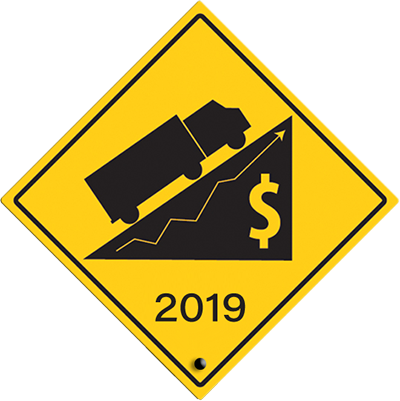 Freight impacts all of us. In this industry, we’ve seen a slight uptick over the course of 2018 in the cost of trucking magazines, catalogs, and books. At the heart of the problem is a perfect storm of reasons – low truck supply, growing capacity demand fueled by ecommerce, and an ongoing shortage of qualified drivers.
Freight impacts all of us. In this industry, we’ve seen a slight uptick over the course of 2018 in the cost of trucking magazines, catalogs, and books. At the heart of the problem is a perfect storm of reasons – low truck supply, growing capacity demand fueled by ecommerce, and an ongoing shortage of qualified drivers.
For Walmart, the pinch is so profound that they plan to double spending on finding and keeping new drivers, according to Matthew Boyle writing in Bloomberg.
“The retailer, whose private fleet of 6,500 trucks is one of the largest in the nation, will offer referral bonuses of up to $1,500, shorten the on-boarding process for new hires by more than a month and broadcast its first ad focused on its 7,500 truckers,” Boyle explains.
Their private fleet is a huge part of what drove Walmart to its current level of success, yet recent struggles with turnover are causing the company to double down on offering a more attractive package. And their trucking force is aging, Boyle notes.
“The average age of a Walmart driver is 55, so the company is also losing many to retirement. Over the next decade, the trucking industry will need to hire roughly 898,000 new drivers, or an average of nearly 90,000 per year.”
Even so, truck drivers around the country are dealing with new legislation – the ELD mandate – that many say is overly restrictive and leaves truckers racing against the clock. The result is that many experienced truckers are leaving the industry thanks to curtailed freedoms and lower earnings. And the trucking industry is reeling from a lack of qualified drivers.
As a result, the cost of everything we consume – from paper goods to groceries to raw materials – is going up. So what’s ahead for 2019?
Overall, we can expect e-commerce to continue to expand, putting more pressure on the trucking industry.
“It is predicted that the rates will stabilize but as long as capacity is tight, the rates will continue to rise,” writes Jurica Magoci in Fueloyal.com.
One trend that may be helping to stabilize costs in the long term is the rise of shipping apps that facilitate on-demand freight orders, Magoci explains.
“In addition, the shippers are embracing any solution that will provide them with an ease of the job,” she continues. “Further, carriers are also embracing the platforms which offer them a higher and a faster payment.”
While tech may help, the reality is the capacity crunch is causing rising rates, and that is fueling inflation across industries. Your best defense is a good offense, with as much advance planning and logistics as possible. Talk to us and see if we can help.

October 28, 2020, 9:24 am